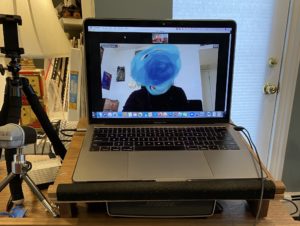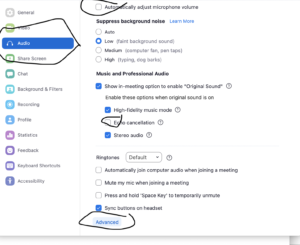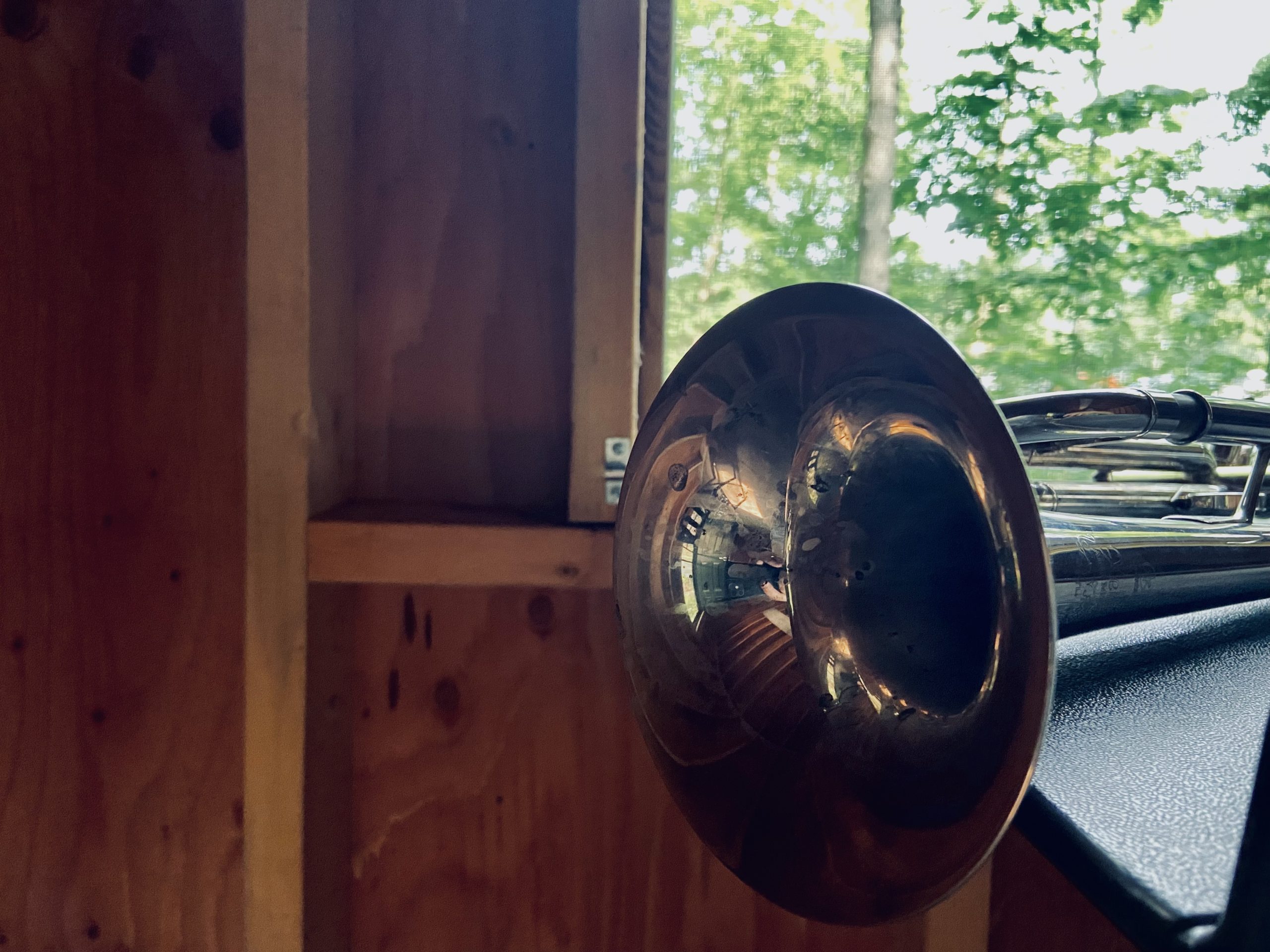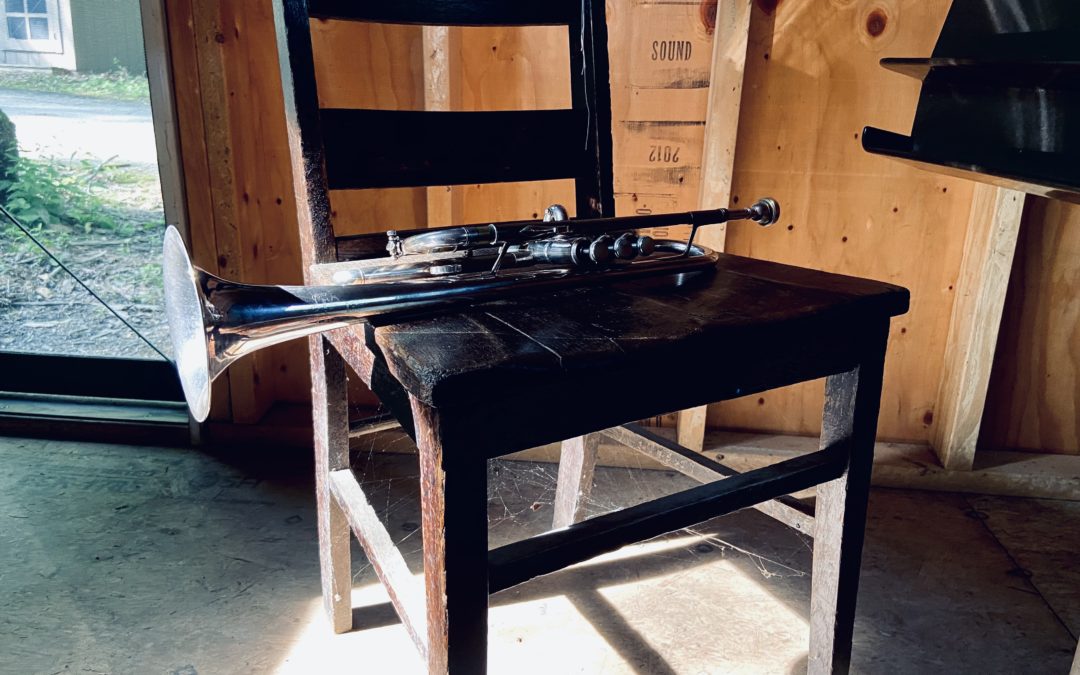
Written by Ben Wright
I have met and worked with many fantastic trumpet players since spring of 2020 via Zoom: American, Canadian, Asian, Australian, Spanish, and British players; older players and younger; amateur and pro. I feel lucky to have been able to help so many people from the safety and convenience of our respective homes/countries. Even now that it is safer, I am still thankful for the Zoom interface and its ability to reach far and wide.
I wanted to share some info on how you can make your distance learning lessons go smoother from a technological standpoint.
Often I hear people say: I need FANCY equipment to make zoom lessons work, right?
No!!!
Are you among the people that have expanded their minds and improved their playing over the last year by taking lessons with experts all over the world via Zoom? I know that for many of you the answer is yes, but just in case…
Do you need a mixing board, preamp, condenser mic, DSLR camera in 4K, internet at warp speed, and/or supercomputer to make trumpet lessons work on zoom?
Nope. Can you use just a cell phone on 3g or slow WiFi? Well… sorry, no.
Here’s what I use: MacBook Pro (2018), Apogee Mic (that’s the model name, but you can use any plug and play USB mic in my experience to excellent effect as long as it has a way to adjust gain control), corded Ethernet connection to Verizon Fios, and an Apple AirPod in one ear with a corded backup nearby just in case.

I’ve made excellent connections with my online students using similar setups with GREAT results since March of 2020.
Does it help to have some setup tips? Yes- here’s a great zoom setup guide.
Make sure you are running the latest Zoom version by clicking Check for Updates (any time Zoom doesn’t work well this is your first place to check :

Once you are sure you have the latest and greatest version of Zoom, open Zoom and select the cog wheel in the upper right corner:
Once into the settings menu, select “Audio” on the left and check or uncheck the options as shown below:

Click on “Advanced” at the bottom of the screen. On the following page, set echo cancellation to Auto.

Next, select Video on the left side of your settings window and uncheck HD – this will ensure that more of your internet bandwidth will go to your audio feed and reduce lag.

That is it for Zoom settings.
As far as to use WiFi or a corded connection (called an Ethernet cable), always choose the latter as it will ensure the most reliable connection (especially if, like me, you have 11 year olds playing Minecraft on the wifi!). I bought a 50’ cable for mine to connect to the router from Amazon for under $20.

Once you have done these things, you can be reasonably sure that your Zoom lesson learning can be maximized!
Related Articles
Related
How to Try & Buy The Perfect C Trumpet
I get a lot of questions from people asking what’s the best way to try trumpets. It is especially difficult when you’re younger to try trumpets effectively: and I would be a good example of that. I had a fairly bad c trumpet for all of my undergraduate years and into my first job. I was kind of left to my devices to choose my instrument and when you’re a little less consistent it’s harder to effectively choose an instrument that is right for you. That was why I ended up with a bit of a clunker!
Reframe and Redirect – A More Thoughtful Way to Practice
I had some fun writing this for Trumpet Magazine Online, a publication that has most of its following in Europe. I thank my students both in my T5 Mastercourse and the New England Conservatory and their hard work, which reminded me of these lessons – I often need to remind myself that they work for me too!.
How to Make Audition Recordings
What’s the biggest difference between a recorded audition and a live audition? You have the ABILITY (double edged sword here) to record it as many times as you want or have time to with a recorded audition. When it is live, you get one shot. Most of the recorded auditions now are being asked to be done straight-through, with no edits. This takes more planning and preparation than being able to record one selection at a time. It also gives us as the listeners a better overall idea of your playing.


